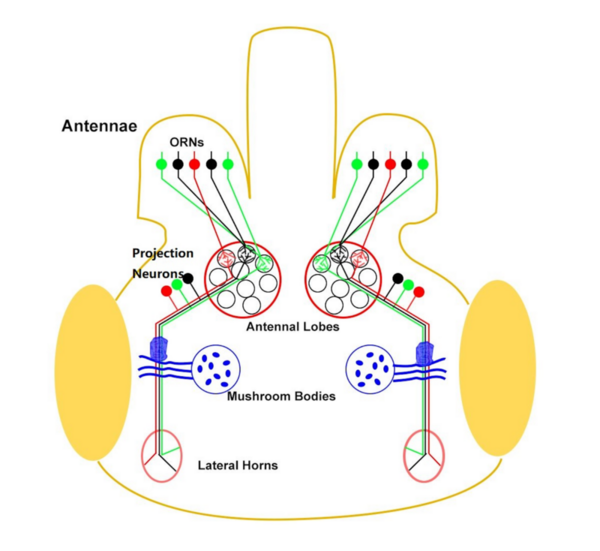Linear and non-linear summation of responses to visual and olfactory cues in male Drosophila melanogaster
(1) International Department of Chengdu Shude High School, Chengdu, China
https://doi.org/10.59720/22-063
The decision-making and navigating abilities of animals assist them in surviving in an environment with multimodal stimuli, but how the nervous system integrates multisensory information remains unknown. Thus, we chose to study summation, a main mode of integration in Drosophila melanogaster. We investigated whether summation of the responses to visual and olfactory cues was linear or non-linear and explored the significance of both patterns. By a population assay, we quantitatively characterized male Drosophila’s spatial steering behavior in response to visual and olfactory cues. Based on a pioneer study from previous research, we hypothesized that the response to concurrent presentation of visual and olfactory cues would be a simple linear summation of cues presented separately. The visual stimulus in our study was 250 lux white light, and the five attractive odorants were 1-hexanol, acetoin, ethyl acetate, 2,3-butanedione, and isopentyl acetate. The results showed that the performance of 1-hexanol, ethyl acetate, and isopentyl acetate supported the hypothesis. These phenomena indicate that visual and olfactory information are relayed to descending neurons in the ventral nerve cord to direct behavior separately, suggesting independent sensorimotor pathways between these odorants and light. However, acetoin demonstrated inhibition, and 2,3-butanedione demonstrated synergy with light. These phenomena indicate that information first be relayed to some higher site in brain for multisensory integration and computation then be relayed to descending neurons in the ventral nerve cord to direct behavior. Therefore, the results indicate that the integration pattern of phototaxis and odortaxis may depend on the specific odorant. In addition, our data suggest that the integration pattern may not depend on odorant representation by glomeruli in the antennal lobes. Instead, integration pattern may depend on some higher order of odorant processing center, where information could be more efficiently and accurately processed. Our experiment contributes to understanding neural circuits and information processing in insects and more complex species.
This article has been tagged with: